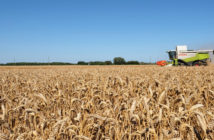Freedom of choice between genetically modified (GM) and non-GM products is a central goal of the EU’s Common Agricultural Policy. It is essentially based on the principle of coexistence. EU Member States apply coexistence measures such as minimum distances between fields with, and without, GM that allow the growing of GM and non-GM crops in the same area, transport and market them side by side, preserving their identity in accordance with the relevant labelling rules and purity standards.
Within PRICE*, coordinated by the Technische Universität München (TUM), researchers have studied how implementable and costly these strategies are for farmers, agri-food supply chain operators and consumers. They found that the current measures implemented to ensure coexistence of GM and non-GM crops in the EU are practically feasible, both at farm level and along the supply chain. However, these measures come with additional costs, which are partly paid by consumers and other supply chain stakeholders.
Effective measures at farm level
The PRICE results show that various technical measures are effective in ensuring compliance with the official 0.9% threshold in diverse maize farming systems across Europe**. Professor Justus Wesseler, project leader of PRICE said: “During 2 years we have done field trials with GM maize in Spain, applying buffer zones or different sowing dates resulting in asynchrony in flowering as recommended by the Seed Producers’ Association. The results demonstrated that these are effective methods for Spanish maize growers to ensure coexistence in the framework of current legislation***, also at the level of small plots. Field trials with non-pollinating cytoplasmic male sterile maize in Germany, the Czech Republic and Spain showed that this would be an effective biological measure.” The results indicate that the current uniform isolation distances set up by most Member States are disproportionate to the official threshold and may lead to unnecessary costs and burden to farmers.
The researchers also asked 1,473 farmers in Germany, Spain, Portugal and the UK what they thought about implementing coexistence measures. “Both farmers growing GM maize and those growing non-GM maize told us they consider the application of buffer zones and keeping data for 5 years practical. They had more problems with applying different sowing times and the issue of liability for damage”, Wesseler said.
Another team of PRICE researchers developed a prototype of a web-based Decision Support Tool (DST) for decision-makers (e.g. farmers, advisers, co-operatives, policy-makers). “This DST enables one to account for factors affecting adventitious presence such as climate, predominant wind direction, landscape patterns, and agronomic characteristics (flowering dates). For maize, the DST allows the prediction of the distribution of adventitious presence of GM material in non-GM maize fields. The tool calculates the probability of a certain level of cross-pollination between GM and non-GM fields and tells one what the expected effect is of a specific buffer zone or a difference in flowering time. It thus makes it feasible to implement proportional coexistence measures. For other crops, the DST can assess the implications of applying uniform isolation distances at the landscape level”, Wesseler said.
Segregation in the supply chain as a marketing strategy
A survey among stakeholders in the maize and soya supply chain in Germany, Italy, Portugal and Switzerland showed that the vast majority of imported soybean for the feed industry is already GM but there is also a market for non-GM products. Wesseler said that: “Separate non-GM supply chains that allow for non-GM products, such as ‘Ohne Gentechnik’ labelled milk in Germany, do exist, but these are niche markets. Such non-GM products are usually integrated in a wider marketing strategy that focuses on ‘organic’ or refers to a specific traditional or regional origin.”
In general, retailers or food processors are the leading actors promoting the definitions of voluntary non-GM standards and co-ordinating the other stakeholders. Once the segregated supply chain is established and running, its operation becomes routine. Feed processing is a critical point for the risk of adventitious presence. A widespread solution sees compound feed processors using dedicated facilities (non-GM or combined with organic) to ensure compliance with regulations. However, large dedicated non-GM facilities often work under capacity and are unable to leverage economies of scale.
In summary, Wesseler said: “PRICE has found that coexistence of GM and non-GM products in Europe is possible under current EU legislation. The availability of non-GM soybean in third Countries, the non-GM price premium, the segregation costs along the supply chain, and the willingness to pay by EU consumers for the non-GM attribute are crucial factors for the economic sustainability of non-GM voluntary standards in the long run. Lower thresholds, or other stricter measures, would cause difficulties for the supply of non-GM feedstock.”
—-
* PRactical Implementation of Coexistence in Europe.
** Only GM maize is currently grown in Europe.
*** The level of detectable GMO presence in adjacent fields with non-GM maize was lower than 0.9%, which is the legal threshold for GMO labelling.



